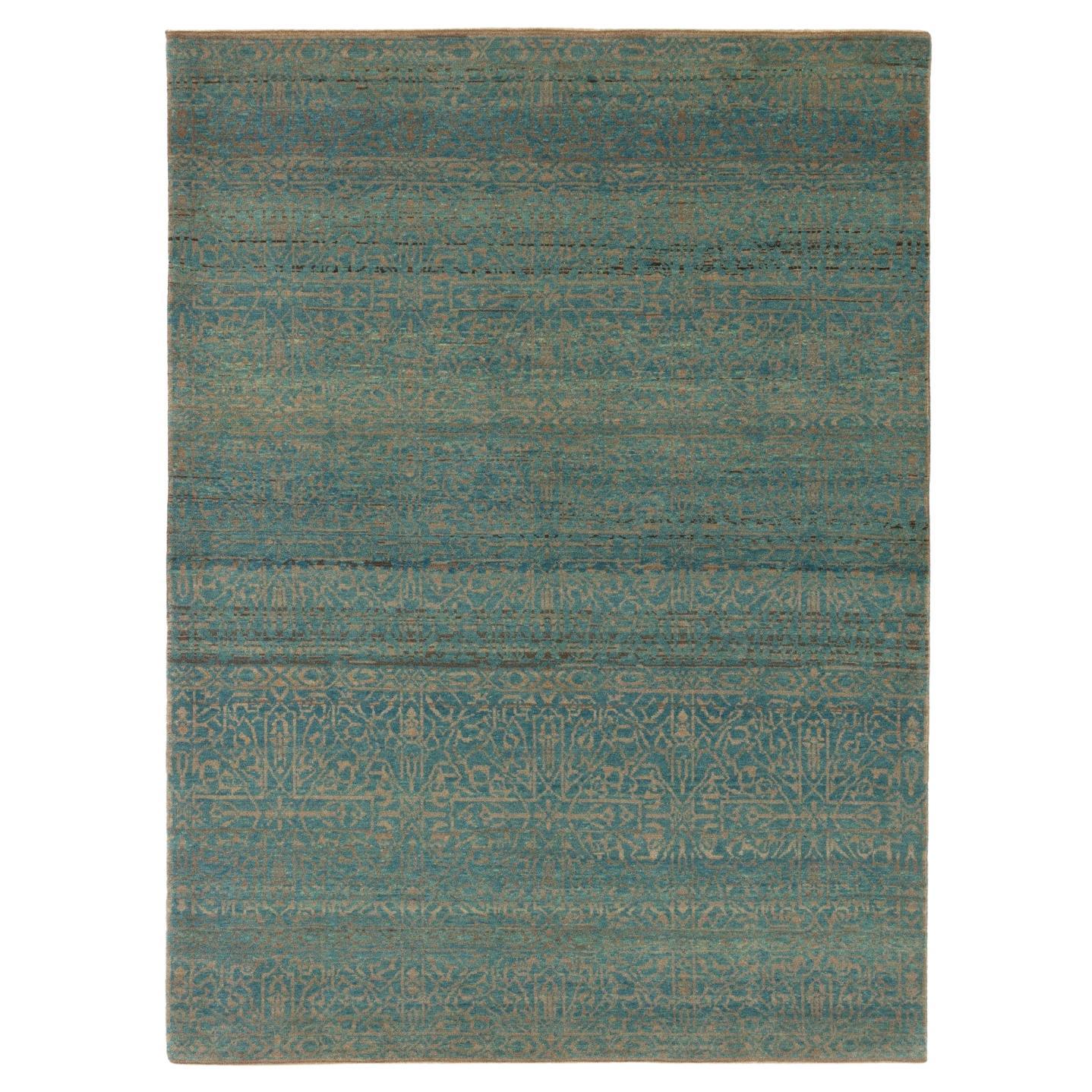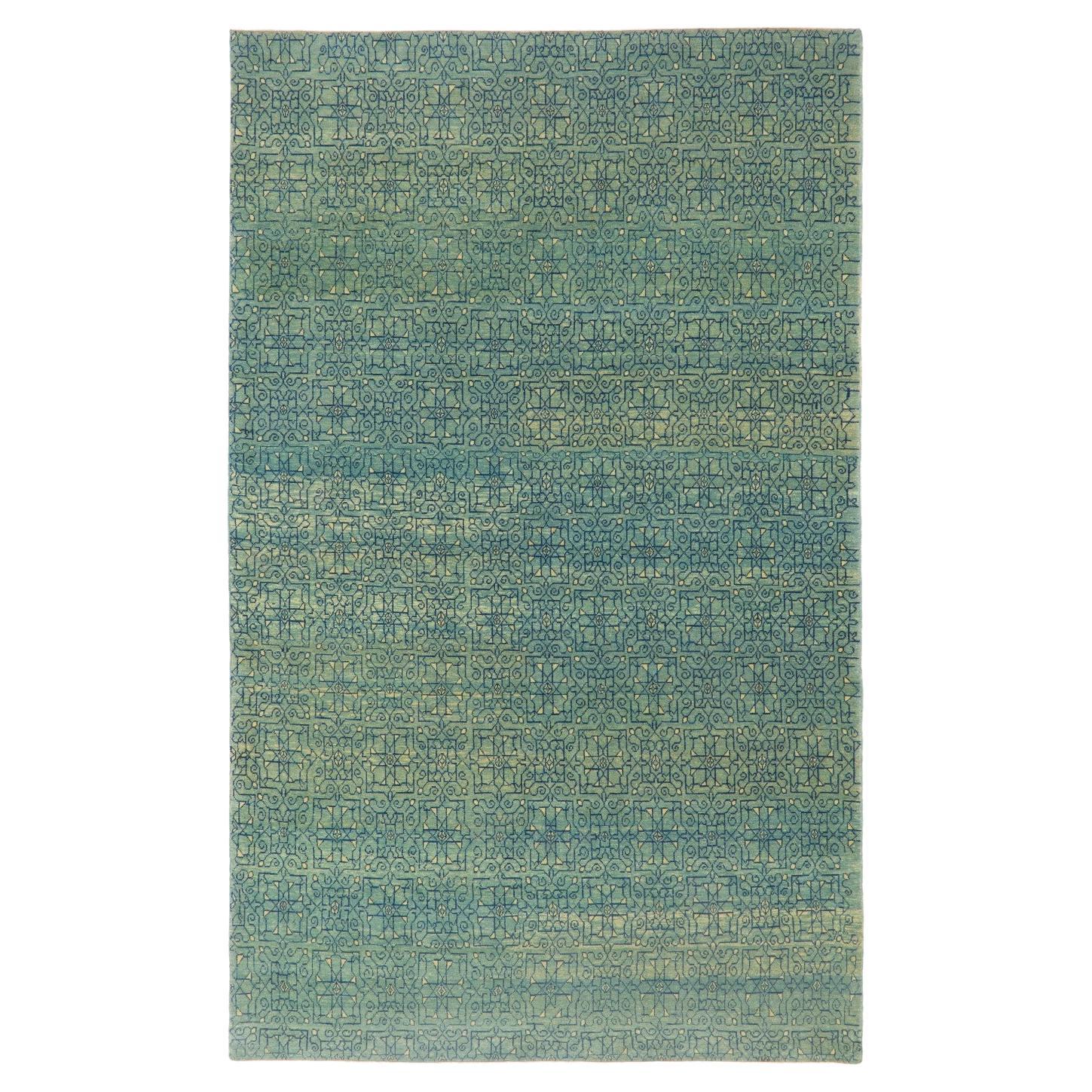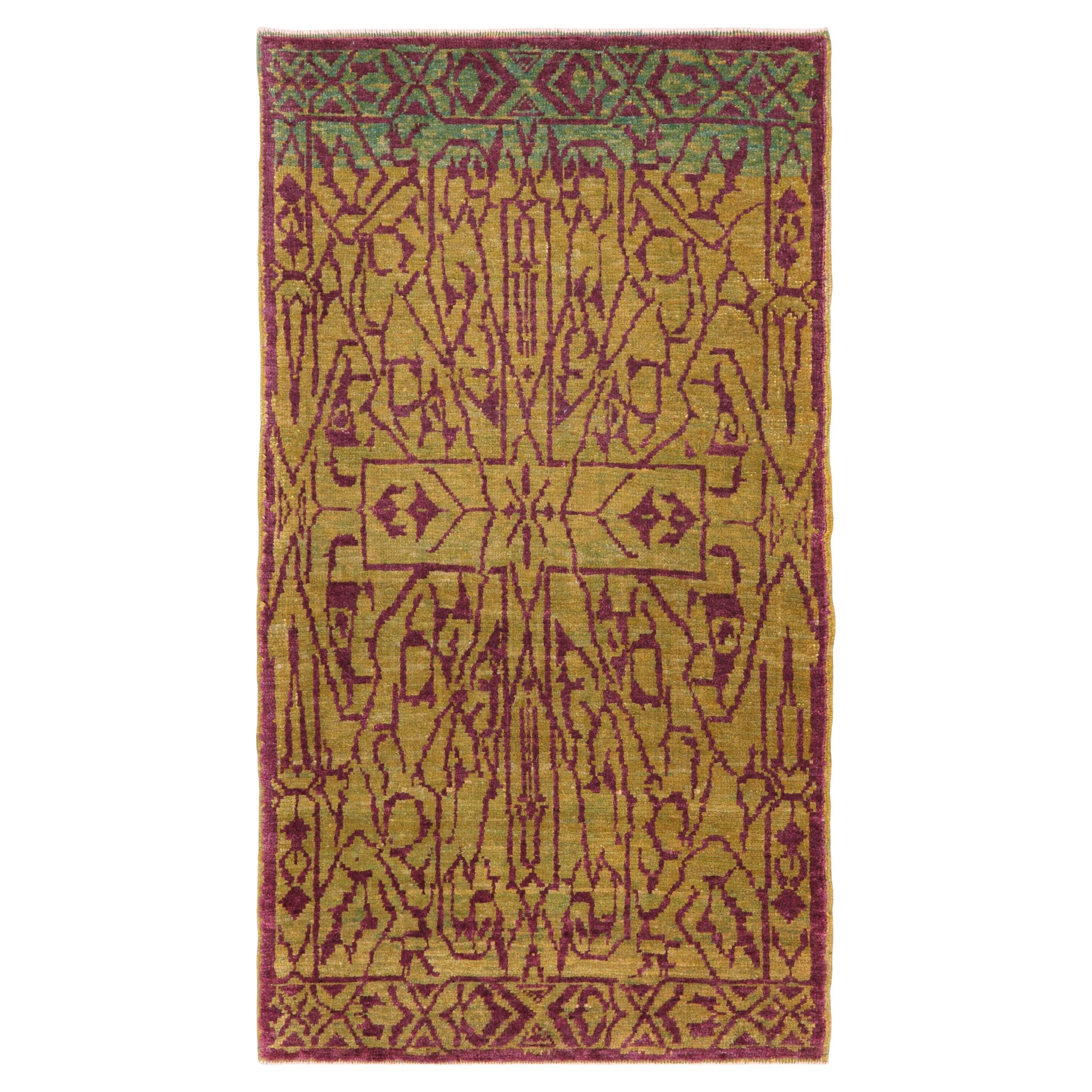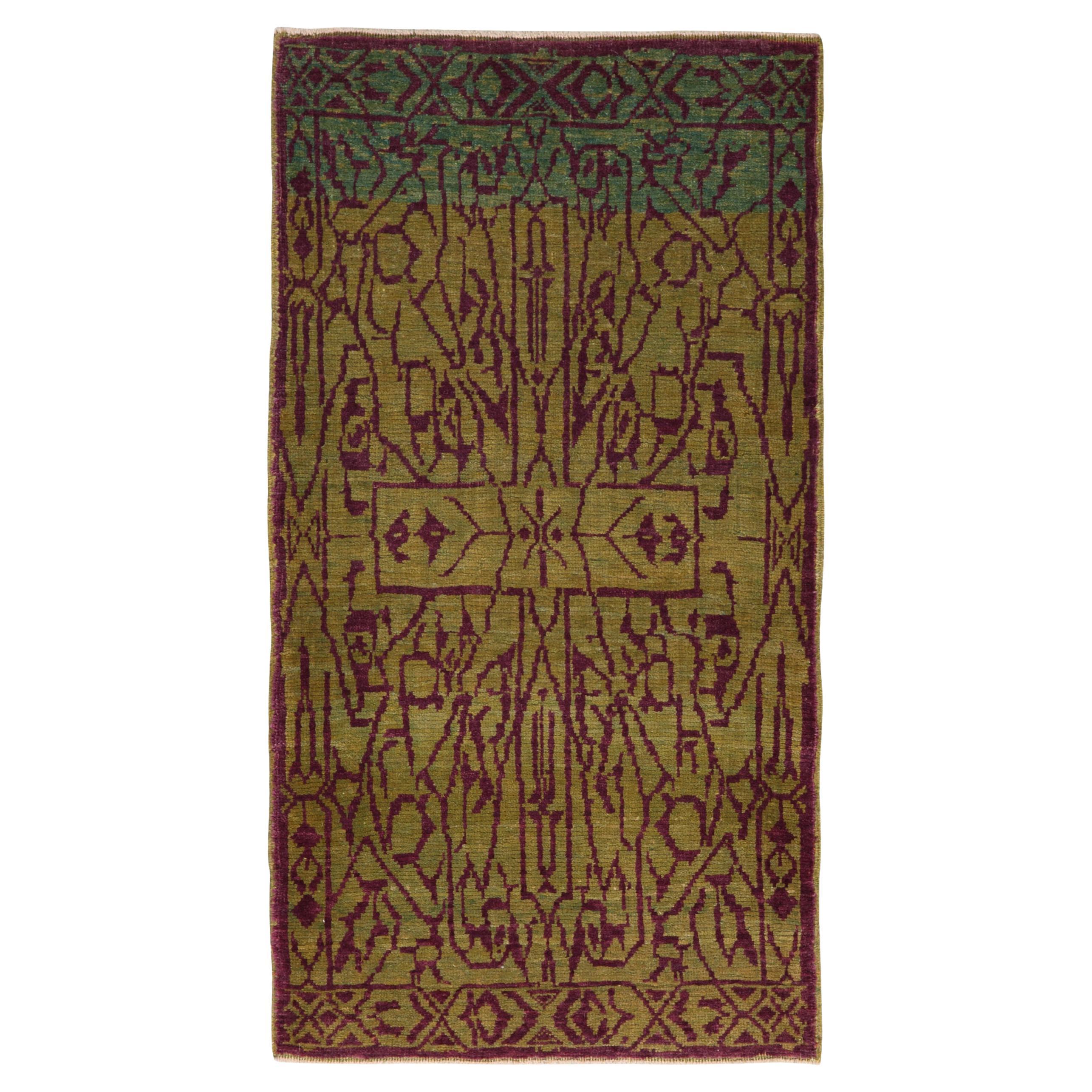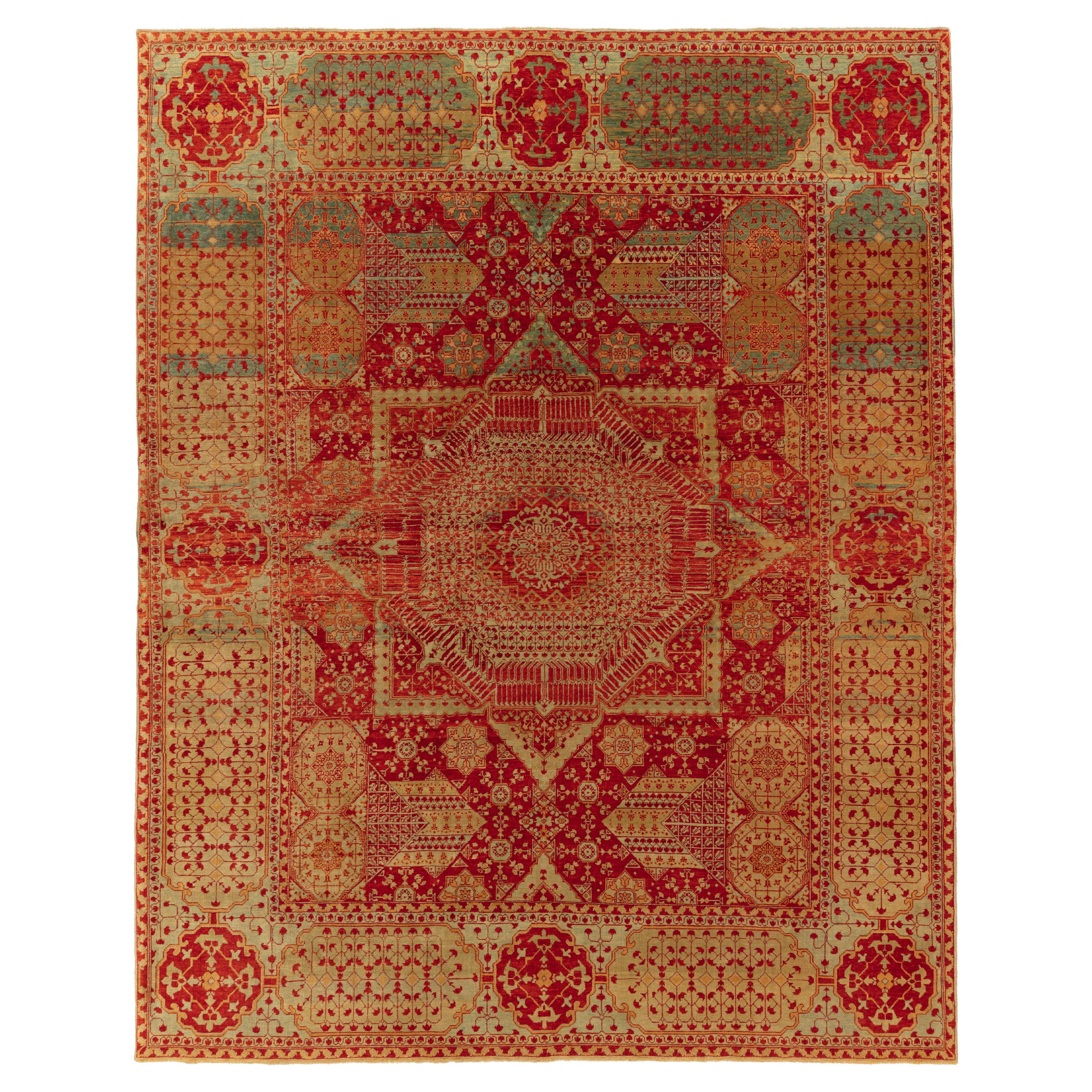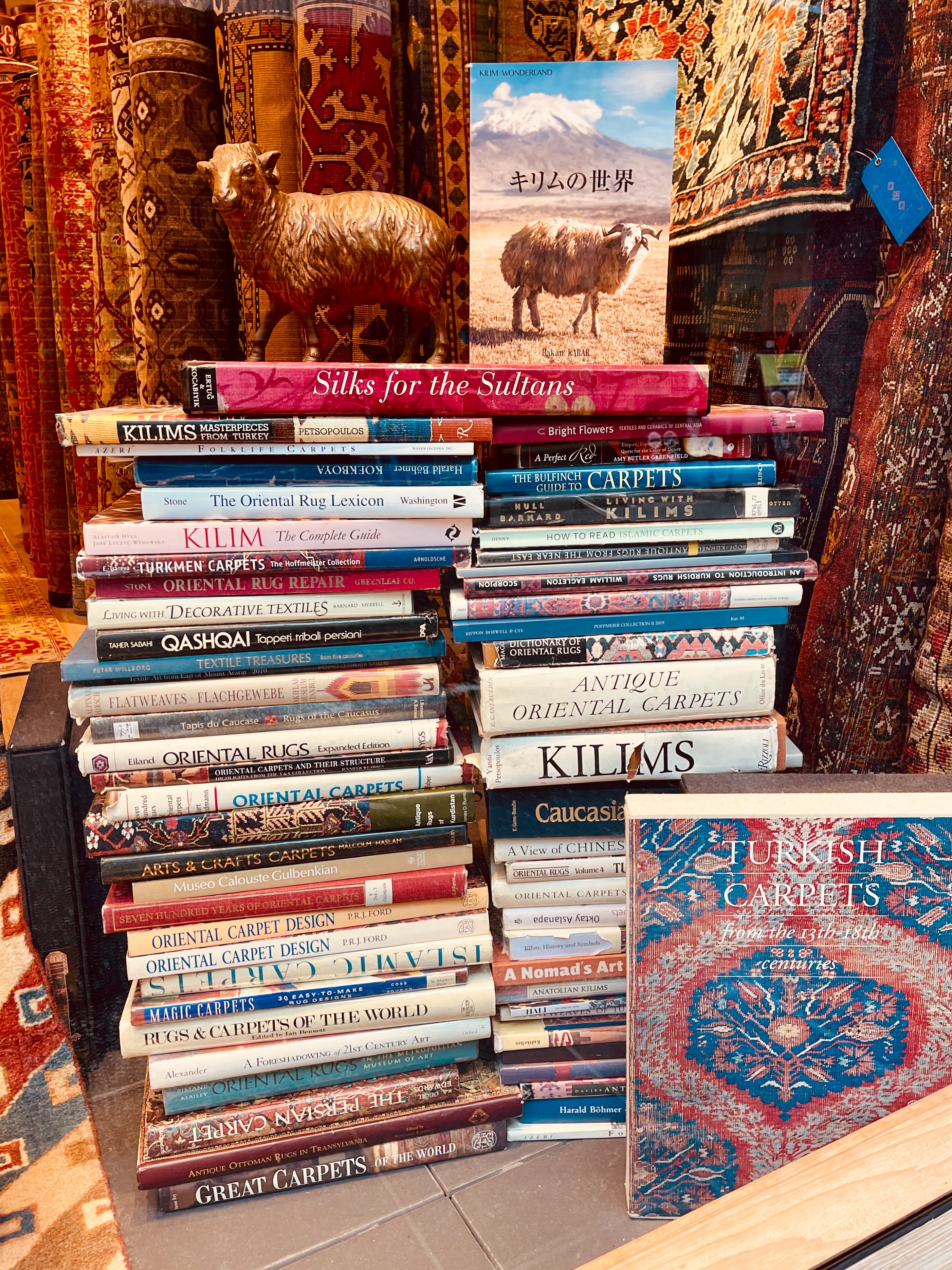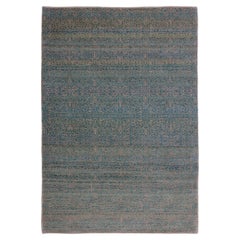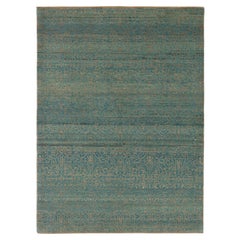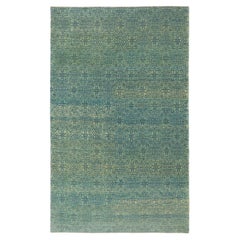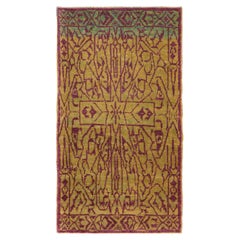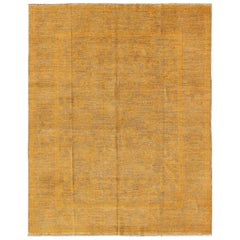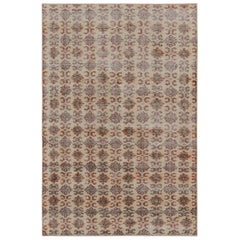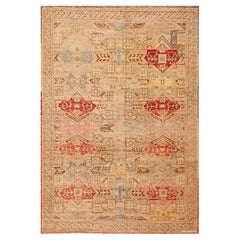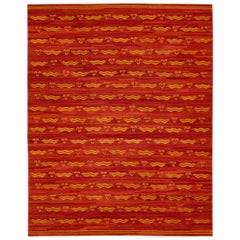Items Similar to Ararat Rugs Modern Rug with Mamluk Geometric Design, Natural Dyed Carpet
Want more images or videos?
Request additional images or videos from the seller
1 of 5
Ararat Rugs Modern Rug with Mamluk Geometric Design, Natural Dyed Carpet
$7,400
£5,614.95
€6,420.19
CA$10,335.79
A$11,492
CHF 6,000.49
MX$139,885.57
NOK 76,563.59
SEK 71,736.43
DKK 47,915.08
Shipping
Retrieving quote...The 1stDibs Promise:
Authenticity Guarantee,
Money-Back Guarantee,
24-Hour Cancellation
About the Item
This rug has an interpreted design composed of a geometric lattice pattern taken from a part of the Mamluk rug, filling the field elegantly, has the impression that it is only part of a larger scheme designed 15th-century rug from the Mamluk era, Cairo region, Eygpt. Mamluk carpets originated in a physical environment that lacked the combination of abundant marginal grazing land and a temperate climate with cool winters that were common to most carpet-weaving areas in the Islamic world. While related to a broader tradition of Turkish weaving centered in Anatolia, far to the north, the designs of these carpets include atypical elements, such as stylized papyrus plants, that are deeply rooted in Egyptian tradition. Their unusual composition and layout probably represent an attempt to develop a distinctive product that could in effect establish a “Mamluk brand” in the lucrative European export market. The uncharacteristic color scheme—devoid of the undyed white pile and employing a limited range of three or five hues in much the same value—also suggests a conscious attempt to create a particular stylistic identity. Also virtually unique in the world of Islamic carpets is the S-spun wool. It has been argued that the tradition of clockwise wool spinning originated in Egypt because of the earlier Egyptian tradition of spinning flax into linen thread. Details of the plant’s botanical structure make it impossible to spin flax fiber in the more common counterclockwise direction utilized throughout the Middle East for wool and cotton.
Mamluk carpets with the color combinations seen in the Simonetti are now generally accepted as part of an earlier tradition that has many links to the weaving of Anatolia, Iran, and Syria. The “three-color” Mamluk carpets, well represented in the Metropolitan’s collection, represent a later development that continued well after the Ottoman conquest of Egypt in 1517. Many such carpets may have been produced well into the seventeenth century, and possibly even later. (Walter B. Denny in [Ekhtiar, Soucek, Canby, and Haidar 2011]). The design of the rug is interpreted by our designers from our Mamlouk-type rugs collection and vivid colors are used for this rug.
Color summary: 2 colors in total;
Imperial Red 426 (Madder Root)
Sunray Color 405 (Henna)
Group: Islamic Rugs Family
Area: Mamluk
Material of Pile: Natural Dyed Hand-spun Wool
Material Warp / Weft: Wool on Wool
Structure: Symmetrical knot on depressed warp inclining to the right
Knots Density: 39x39
Production Place: Southeastern Anatolia – Adiyaman Province
Stock Location: Tokyo
Size (EU): 160 X 268cm
Size (US): 5'2" X 8'9"
Area (EU): 4.3m²
Area (US): 46.2ft²
- Creator:Ararat Rugs (Manufacturer)
- Dimensions:Width: 63 in (160 cm)Length: 105.52 in (268 cm)
- Style:Revival (In the Style Of)
- Materials and Techniques:
- Place of Origin:
- Period:
- Date of Manufacture:2022
- Production Type:New & Custom(One of a Kind)
- Estimated Production Time:Available Now
- Condition:
- Seller Location:Tokyo, JP
- Reference Number:1stDibs: LU8206233002162
ARARAT RUGS
We know and believe that the geography we come from, our past, and our lifestyle are the most important bond between us to carry the oriental carpet art and culture to the next generations along with our core values in our ongoing growth journey.
We are aware that the way to achieve this goal and carry this priceless art and culture to the future depends on a lot of work with all our people every day while adhering to our core values.
For us, art is meaningful in the sense that it brings together various cultures around the world. It is an honor for us that oriental carpet art and culture have been instrumental in this for centuries and that we are a part of this business.
We are tirelessly keeping an eye on auction house information around the world about carpets. New York's Metropolitan, London's Victoria & Albert Museums, and other famous art museums, as well as small specialized museums that house private collections, and books about oriental carpets to collect information on outstanding carpet designs and patterns from around the world. It's our Self-improving and Self-developing culture.
As Turkish Culture of Hospitality, the Kurdish Culture of Generosity, and as Japanese Culture of Business Punctuality; are the most important values that this multicultural background has taught and bequeathed to us. It is essential and valuable for us that you feel this feeling not only by looking at our oriental carpets but from the moment you contact us.
About the Seller
5.0
Platinum Seller
Premium sellers with a 4.7+ rating and 24-hour response times
Established in 1970
1stDibs seller since 2023
55 sales on 1stDibs
Typical response time: 3 hours
- ShippingRetrieving quote...Shipping from: Tokyo, Japan
- Return Policy
Authenticity Guarantee
In the unlikely event there’s an issue with an item’s authenticity, contact us within 1 year for a full refund. DetailsMoney-Back Guarantee
If your item is not as described, is damaged in transit, or does not arrive, contact us within 7 days for a full refund. Details24-Hour Cancellation
You have a 24-hour grace period in which to reconsider your purchase, with no questions asked.Vetted Professional Sellers
Our world-class sellers must adhere to strict standards for service and quality, maintaining the integrity of our listings.Price-Match Guarantee
If you find that a seller listed the same item for a lower price elsewhere, we’ll match it.Trusted Global Delivery
Our best-in-class carrier network provides specialized shipping options worldwide, including custom delivery.More From This Seller
View AllArarat Rugs Modern Rug with Mamluk Geometric Design, Natural Dyed Carpet
By Ararat Rugs
Located in Tokyo, JP
This rug has an interpreted design composed of a geometric lattice pattern taken from a part of the Mamluk rug, filling the field elegantly, has the impression that it is only part of a larger scheme designed 15th-century rug from the Mamluk era, Cairo region, Eygpt. Mamluk carpets originated in a physical environment that lacked the combination of abundant marginal grazing land and a temperate climate with cool winters that were common to most carpet-weaving areas in the Islamic world. While related to a broader tradition of Turkish weaving centered in Anatolia, far to the north, the designs of these carpets include atypical elements, such as stylized papyrus plants, that are deeply rooted in Egyptian tradition. Their unusual composition and layout probably represent an attempt to develop a distinctive product that could in effect establish a “Mamluk brand” in the lucrative European export market. The uncharacteristic color scheme—devoid of the undyed white pile and employing a limited range of three or five hues in much the same value—also suggests a conscious attempt to create a particular stylistic identity. Also virtually unique in the world of Islamic carpets is the S-spun wool. It has been argued that the tradition of clockwise wool spinning originated in Egypt because of the earlier Egyptian tradition of spinning flax into linen thread. Details of the plant’s botanical structure make it impossible to spin flax fiber in the more common counterclockwise direction utilized throughout the Middle East for wool and cotton.
Mamluk carpets with the color combinations seen in the Simonetti are now generally accepted as part of an earlier tradition that has many links to the weaving of Anatolia, Iran, and Syria. The “three-color” Mamluk carpets, well represented in the Metropolitan’s collection, represent a later development that continued well after the Ottoman conquest of Egypt in 1517. Many such carpets may have been produced well into the seventeenth century, and possibly even later. (Walter B. Denny in [Ekhtiar, Soucek, Canby, and Haidar 2011]). The design of the rug is interpreted by our designers from our Mamlouk-type rugs collection and soft colors are used for this rug.
Color summary: 2 colors of total
Bamboo Beige 99 (only specially washed)
Feldgrau 414 (Chamomile – indigo)
Group: Islamic Rugs...
Category
21st Century and Contemporary Turkish Revival Turkish Rugs
Materials
Wool, Natural Fiber, Organic Material
Ararat Rugs Modern Rug with Mamluk Geometric Design, Natural Dyed Carpet
By Ararat Rugs
Located in Tokyo, JP
This rug has an interpreted design composed of a geometric lattice pattern taken from a part of the Mamluk rug, filling the field elegantly, has the impression that it is only part o...
Category
21st Century and Contemporary Turkish Revival Turkish Rugs
Materials
Wool, Natural Fiber, Organic Material
Ararat Rugs Modern Rug with Mamluk Jerrehian Border Design, Natural Dyed Carpet
By Ararat Rugs
Located in Tokyo, JP
The source of the rug comes from the possession of Endre Unger, which was sold at Sotheby’s in 1992. That rug with the central star was designed in the early 16th-century rug by Maml...
Category
21st Century and Contemporary Turkish Revival Turkish Rugs
Materials
Wool, Natural Fiber, Organic Material
Ararat Rugs Mamluk Wagireh Rug with Geometric Design Revival Carpet
By Ararat Rugs
Located in Tokyo, JP
This geometric lattice pattern rug has the impression that it is only part of a larger scheme-designed 15th-century rug from the Mamluk era, Cairo region, Eygpt. These designs have o...
Category
21st Century and Contemporary Turkish Revival Turkish Rugs
Materials
Wool, Natural Fiber, Organic Material
Ararat Rugs Mamluk Wagireh Rug with Geometric Design Revival Carpet Natural Dyed
By Ararat Rugs
Located in Tokyo, JP
This geometric lattice pattern rug has the impression that it is only part of a larger scheme designed 15th-century rug from the Mamluk era, Cairo region, Eygpt. These designs have o...
Category
21st Century and Contemporary Turkish Revival Turkish Rugs
Materials
Wool, Natural Fiber, Organic Material
Ararat Rugs the Simonetti Mamluk Carpet 16th Century Revival Rug, Natural Dyed
By Ararat Rugs
Located in Tokyo, JP
The source of carpet comes from the book How to Read – Islamic Carpets, Walter B. Denny, The Metropolitan Museum of Art, New York 2014 fig.61,62. The five-star-medallion carpet was d...
Category
21st Century and Contemporary Turkish Revival Turkish Rugs
Materials
Wool, Natural Fiber, Organic Material
You May Also Like
Fine Transitional Rug by Keivan Woven Arts With Stylized Geometric Motifs
By Keivan Woven Arts
Located in Atlanta, GA
Light tan and bright yellow and very finely woven Transitional rug in the tan background and bright yellow highlights, Keivan Woven Arts / rug AN-115305, country of origin / type: Tu...
Category
2010s Turkish Oushak Turkish Rugs
Materials
Wool
$6,880 Sale Price
20% Off
Vintage Zeki Müren Art Deco Rug with Geometric Patterns, from Rug & Kilim
Located in Long Island City, NY
This vintage 6x9 Art Deco rug, hand-knotted in wool, circa 1960-1970, is a new addition to Rug & Kilim Collection. This line is a commemoration, wit...
Category
Vintage 1960s Turkish Art Deco Turkish Rugs
Materials
Wool
Nazmiyal Collection Rustic Tribal Geometric Design Modern Area Rug 5'9" x 8'4"
By Nazmiyal Collection
Located in New York, NY
Beautifully Rustic Soft Neutral Color Tribal Geometric Caucasian Design Modern Area Rug, Country Of Origin: Central Asia, Circa Date: Modern Rug
Category
21st Century and Contemporary Central Asian Modern Central Asian Rugs
Materials
Wool
$2,800 Sale Price
30% Off
Modern Rust Kilim Flatweave Geometric Pattern Wool Rug
Located in Norwalk, CT
Beautiful Modern Persian Kilim flatweave wool orange field. This piece has goldenrod accents in a gorgeous all-over geometric design.
This rug measures 10'3" x 12'11".
Our rug...
Category
21st Century and Contemporary Persian Modern Persian Rugs
Materials
Wool
Traditional Geometric Wool Hand Knotted Multi Area Rug 7' 10" x 10' 1"
Located in Norwalk, CT
Kazak rugs have been sought after for generations, their unique design aesthetic a captivating combination of tribal history and geographic influence. Intricately hand-knotted from w...
Category
21st Century and Contemporary Indian Indian Rugs
Materials
Wool
$1,580 Sale Price
20% Off
Vintage Zeki Müren Rug, with Geometric Patterns, from Rug & Kilim
Located in Long Island City, NY
Handknotted in wool, this 3x6 vintage Art deco Zeki Múren rug originates from Turkey, circa 1960-1970 and is latest to join Rug & Kilim’s repertoire of vintage selections.
On the Design:
Believed to hail from the Turkish artist Zeki Muren, this vintage piece enjoys red underscoring a trellis pattern in chartreuse green and chocolate brown tones. Connoisseurs will further admire the shabby chic appeal that this piece carries - a hallmark of Zeki’s signature style.
Condition:
This mid-century vintage Zeki Müren rug...
Category
Vintage 1960s Turkish Turkish Rugs
Materials
Wool
More Ways To Browse
Unusual Ottoman
Silver Tea Spoons
Stone Edge Coffee
Used Bar Table And Chairs
Vintage Midcentury Modern Lacquered Desk
10 Seater Dining Table
Antique Metal Birds
Antique Red Side Tables
Arne Jacobsen Model
Bone China Used
Brass Pedestals For Tables
Crystal Bar Set
French Gilt Console Tables
Massive Wood Table
Metal Stacking Chairs
Norway Chairs
Phone Number
Table With Scalloped Edges

